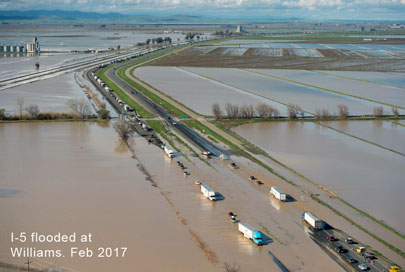

 |
 |
Winter 2016/17 was a wet one for California that ended the five-year drought for much of the state. As of February 2017, the snowpack was at 180% of the average. Is the drought really over? It might be better to think of Winter 2016/17's heavy precipitation as a temporary reprieve.
California has three approximately equal sources of water: snowpack, imported water from the Colorado River, and groundwater. Our groundwater in the aquifers has been severely depleted and it will take YEARS to replace it.
About 30% to 40% of the water California uses comes from our snowpack. Of the water that falls from the sky that we use here in the West, about 75% to 80% comes from snowfall. The rest of the water we use comes from pumping of groundwater. However, the replenishment of the aquifers comes from precipitation and it takes years to replace it.
California never does anything halfway---it's boom-bust in our economy and in our water supply. California always has big swings of drought to flood to drought again but mostly drought. Overall, the West is warming, so an increasing amount of precipitation will be in the form of rain instead of snow. The bad thing about rain is that the rainwater flows downhill right away while snowfall will remain intact up in the mountains. The snowpack water reservoir melts later in the spring and summer when we need it. The snowpack is our water bank that we need for our dry summers.
The summer water bank from melting snow is going to be decreasing as the years go by because of climate change. We've already depleted the aquifers. Water conservation is the key to protecting the future of our kids.
The warming West is going to see the drought-flood cycle become more extreme, so we need to adjust our water policy to take into account the increasing percentage of precipitation as rainfall and decreasing percentage of snowfall. California relies on three main reservoirs: the mountain snowpack, groundwater (aquifers), and human-built reservoirs (dams). California's water policy is designed around the Sierra snowpack. Unfortunately, there are not any more places for big dam projects; certainly not enough places to build the storage capacity we need for the future.
One negative effect of the excessive pumping of ground water is the sinking Central Valley. In some places the land has sunk as much as 8.5 meters (28 feet) since the 1920s from excessive pumping of groundwater. We have pumped so much groundwater that we can actually measure the gravitational effect from the depleted aquifers from NASA's GRACE mission.
Rather than create policy based on one good, wet year, we need to think a bit longer term and emphasize water conservation—even in a wet year.
last updated: March 7, 2017